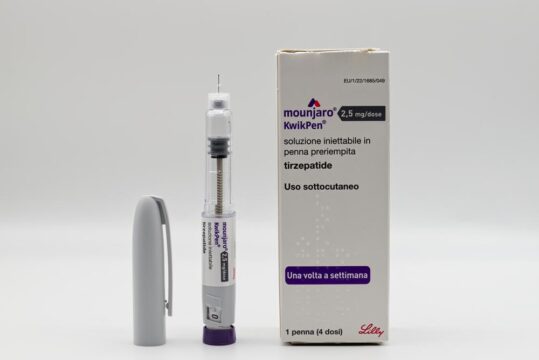Advertisment
Expert insights in advanced ALK-positive NSCLC

Three expert clinicians, Dr Marina Garassino, Dr Sanjay Popat and Professor Tony Mok presented and discussed cases that illustrated important aspects of the management of ALK-positive NSCLC ……
Written by Christine Clark.
According to GLOBOCAN 2018 there were 18.1 million new cancer cases in 2018 and an estimated 9.6 million cancer deaths, explained Dr Enriqueta Felip (Vall d’Hebron University Hospital, Barcelona, Spain), introducing the symposium. Overall, lung cancer is the most commonly-diagnosed cancer, accounting for 11.6% of all cases. It is also the leading cause of cancer death, accounting for 18.4% of total cancer deaths. However, lung cancers are not all the same and a tailored approach is needed. Precision medicine means testing tumour to find the molecular alterations that have become essential for the tumour to survive and then treating with a targeted drug to counteract the mutation and kill the tumour. Advances in precision medicines and immunotherapy have made this possible.
A number of actionable drivers – comprising mutations, such as EGFR and BRAF, rearrangements, such as ALK and ROS1 and amplifications, such as MET, have been identified. Treatment using targeted agents has resulted in “unprecedented PFS and OS” figures with far less toxicity than CT, said Dr Felip. ESMO practice guidelines have been drawn up accordingly. One important feature of the guidelines is the stipulation that tests for ALK must be ordered at the time of diagnosis and results should be available within two weeks so that treatment can be started without delay.
Successful targeted therapy relies on choosing an agent that is potent and selective with low toxicity and good CNS penetration. A number of ALK-tyrosine kinase inhibitors (ALK-TKIs) are now approved and three case examples illustrated key aspects of treatment:
Case 1: a 42-year-old woman, never-smoker, presented with a cough. She was found to have a stage IV adenocarcinoma with signet ring feature and bilateral lung nodules. She had diffuse liver metastases but no CNS metastases. Investigations showed an ALK translocation and EGFR wild-type. Crizotinib was prescribed in May 2015 but by July 2016 her disease had progressed in the liver and lungs.
Dr Marina Garassino (National Cancer Institute, Milan, Italy) noted that testing for broad range of mutations at diagnosis is essential. Both crizotinib and ceritinib are superior to chemotherapy in ALK-positive non-small cell lung cancer (NSCLC). Ceritinib commonly causes nausea, diarrhoea and vomiting and doses often have to be reduced, she commented. The second-generation ALK-TKIs alectinib and brigatinib are superior to crizotinib and both have good CNS penetration because they not substrates of p-glycoprotein. The presence of brain metastases should prompt the use of second-generation ALK-TKIs – agents that might even prevent onset of brain metastases if given from the outset. Patients who have been exposed to ALK-inhibitors develop different secondary resistance mutations, such as the G1202R mutation which is sensitive to lorlatinib and repotrectinib.
Case 2:
Sequential ALK-TKI therapy using crizotinib followed by any ALK-TKI is associated with a five-year survival of about 75% but there has been uncertainty about the ideal sequence, explained Professor Sanjay Popat (Royal Marsden Hospital, London, UK). One option is to start with crizotinib and switch to a second generation ALK-TKI on progression and lorlatinib third-line. Another option is to start with a second-generation ALK-TKI and switch to lorlatinib (or possibly ensartinib or brigatinib second-line with chemotherapy third-line.
A 69-year old man with ALK-positive NSCLC had an excellent partial, extracranial, response (PR) to crizotinib but developed eight small intracranial sites of progressive disease.
The cumulative risk of CNS progression with crizotinib treatment is 41% at 12 months, Prof Popat explained. If radiotherapy (RT) is considered then the risk of radiation necrosis in the brain is always a cause for concern.
Trials show that stereotactic radio surgery (SRS) is effective for CNS metastases in patients with ALK positive NSCLC. However, the intracranial response to brigatinib treatment (post-crizotinib) is very good and this can mitigate the need for whole brain RT or SRT with the attendant risks of cognitive decline or radio-necrosis, he said.
In practice, “Upfront next-generation ALK-TKIs are now standard” said Prof Popat. Their high CNS activity appears to be responsible for the long PFS that is achieved. In addition, lorlatinib has excellent intracranial CNS activity on progression after next- generation ALK-TKIs.
In this case, brigatinib was prescribed. Two months later the brain lesions had shrunk and the patient is now “doing fantastically well on brigatinib”, said Prof Popat.
Case 3
A 36-year-old woman – a never-smoker – presented with a dry cough and progressive onset of dyspnoea in May 2017. She had large right pleural effusion and a PET CT scan showed a right lung tumour with multiple lymph node metastases but no CNS metastases. The tumour was ALK-positive and crizotinib was prescribed. The patient improved initially but by May 2018 she had developed progressive disease.
After crizotinib treatment a second-generation ALK-TKI can be given to overcome ALK-resistance mutations. Response rates (RR) range from 38 to 56% with median PFS ranging from 7.2 to 16.7 months, said Professor Tony Mok (Chinese University of Hong Kong). If treatment is started with a second-generation ALK-TKI the picture may be more complex. There are likely to be multiple mutations and the incidence of G1202R resistance is more common with ALK variant 3 after receiving second generation TKI, he explained. Lorlatininb treatment after a second-generation ALK-TKI is associated with RR of 33% and median PFS of 5.5 months.
Asked if how to treat multiple ALK mutations identified by next generation sequencing (NGS) Professors Mok and Popat agreed that if the mutation is present but there is no corresponding fusion protein then it is not ‘drugable’ and is unlikely to be an oncogene driver.
Based on presentations given at the European Society for Medical Oncology Congress, Barcelona, September 2019





